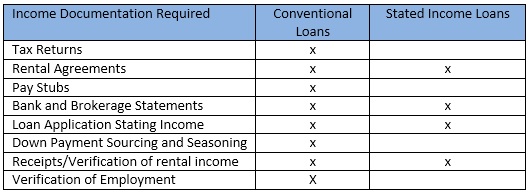What does “Stated Income Loan” mean?
Hard Money and Non-Prime Lenders offer “Stated Income” loans to fill a gap on situations where conventional loan standards deny the loan. Today’s blog will demystify “Stated Income” and describe what these loans are and are not. Importantly, we will also discuss the opportunities and pitfalls for borrowers and investors in “Stated Income” loans.
Many pundits argue that “Stated Income” caused the devastating Economic Crisis in 2008. These “Liar Loans” loans resulted in massive defaults and the resulting Dodd Frank Act clamped down on the underwriting requirements and created new Ability to Repay (ATR) rules. Now however, Mortgage applicants who can’t provide tax returns or pay stubs to show their income are getting stated income loans again as Mortgage Lenders chase customers they can no longer afford to ignore.
A stated income loan is a mortgage where the lender does not verify the borrower’s income by looking at their pay stubs, W-2 (employee income) forms, income tax returns, or other records. Instead, borrowers are simply asked to state their income, and taken at their word.
Stated income loans have been extended to customers with a wide range of credit histories and income sources whose personal income tax returns may not reflect their ability to repay a loan. Self Employed, small business owners, laborers working for cash wages, and other non W2 wage earners are typically good candidates for Stated Income loans.
Real Estate Investors also rely on “Stated Income” loans where these investors buy properties they intend to rent and can demonstrate an ability to repay, either through rents or income verifiable through bank or brokerage statements. Lenders typically look for enough assets from the borrower to pay six to 12 months of payments, while also demanding high down payments to reduce the chance of default.
Post Dodd Frank, “Stated Income” loans still need to prove Ability to Pay but in a different way. While specific FICO and DTI requirements are waived on “Stated” loans, 35% or greater borrower equity is typically required. The table below describes the typical “Income” documentation of a conventional vs. a “Stated Income” loan:
“Stated Income” loans recognize the varying income sources in today’s economy and are a viable and proven way to finance real estate purchases and cash-out refinances. Have you had any experience with a “Stated” loan?


